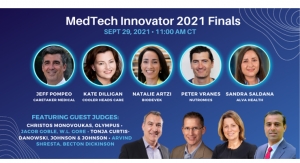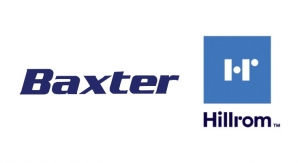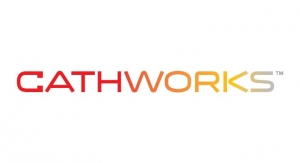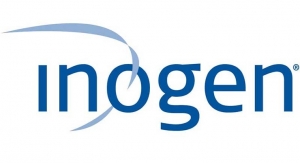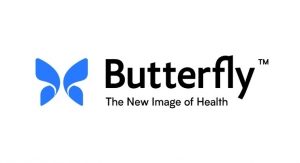Jeffrey J. Kimbell and Caroline P. Tucker, Jeffrey J. Kimbell & Associates Inc.06.04.18
As the fierce healthcare debate of repeal-and-replace has tapered off in the nation’s swamp, states are using their authority to craft innovative policy solutions to improve the health and well-being of their populations that reflect the politics of each state. While increasing access to life-changing medical technologies certainly aligns with the goals of creating a healthier population, not all states seem to agree on exactly how to get there. One concerning bill is being debated in California: Assembly Bill (AB) 3087, introduced Feb. 16 by Democratic Assemblymen Ash Kalra and Mark Stone. AB-3087 emerged from a California legislature that is eager to achieve universal healthcare coverage without passing legislation to create a highly controversial, and exceedingly expensive, single payer entity in the state. The result is a cost containment proposal that neither achieves more coverage nor improves health outcomes.
The bill would create the California Healthcare Cost, Quality, and Equity Commission, an independent state agency designed to control in-state healthcare costs and set the amounts accepted as payment by hospitals, physicians, physician groups, and other healthcare providers for items and services, including medical devices for commercially insured residents. One key purpose of the Commission is to determine ways for the California state government to reduce the cost of medical devices paid for by private purchasers in the commercial market.
Lawmakers liken AB-3087 to Maryland’s popular all-payer model, but this is a disingenuous claim. The Maryland system is one in which the state sets payment rates for hospital services for all payers, with the intent that individual hospitals will receive the same payment amount for the same services to streamline reimbursement and lessen the effects of inadequate third-party payment. In California, however, AB-3087 would require the Commission to annually determine the base amounts that healthcare entities are required to accept as full payment for healthcare services, where the base amount for an entity shall be no lower than 100 percent of Medicare rates. The problem is that Medicare pays roughly 77 cents for every private healthcare dollar in California, resulting in a 23 percent payment decrease for healthcare entities if the Commission chooses to enact the maximum statutory cut—a cut which will surely be felt by manufacturers who contract with such entities. Furthermore, Medicare rates are set at the federal level by the Centers for Medicare and Medicaid Services (CMS), and there can be positive or negative variation in payment rates due to political and economic interests. By tying payments in the state commercial market to a federal program, AB-3087 subjects healthcare providers to the whims of Congress, not what is best for their California patients.
Proponents of AB-3087 also tout how the bill would create an appeals process for the Commission to reconsider payment adjustments, such as if the costs of a medical technology were substantially more expensive than the payment rate set by the Commission. Essentially, this appeals process would force doctors, hospitals, and other providers to beg for more equitable payments from the Commission to be able to deliver necessary, high-quality care, including innovative medical technologies, to Californians. Under this bill, doctors would lose valuable time by having to ask permission from a government-run Commission to practice medicine as they see fit.
On its face, AB-3087 also excludes the ability for critical stakeholder input. The Commission created by AB-3087 would include 11 paid members and not a single member of the Commission, nor staff of the Commission, can be employed by or be a consultant to medical technology companies and manufacturers. Doctors, hospitals, trial lawyers, economists, and consumer advocates, however, are eligible to be appointed to the Commission. Fundamentally, the Commission created by AB-3087 gives government bureaucrats and a select group of non-elected stakeholders enormous control over healthcare decision-making in the state.
This issue is as timely as it is important. At the time of writing this article, AB-3087 is waiting to be considered by the California State Assembly Committee on Appropriations. Even if this bill is defeated in this session, by the Committee on Appropriations or in the California State Senate, it will absolutely be resurrected in 2019. In fact, Gavin Newsom, the front-runner in the California governor’s race, has emphatically campaigned on the need for state-run, universal healthcare in California. AB-3087 is a logical extension of and further commitment to government-run healthcare. This concept has been considered at the national level as well. For example, on May 9, U.S. Representative Rosa DeLauro (D-CT) introduced a bill to create a price review board at the Department of Health and Human Services (HHS) that would regulate pharmaceutical and medical device prices.
AB-3087 would have a devastating impact on the California healthcare industry. According to initial estimates by the California Medical Association (CMA), AB-3087 would cause roughly 175,000 hospital workers alone to lose their jobs and force many hospitals and medical practices to close. AB-3087 would also push physicians, dentists, and other clinicians into early retirement or to other states that have more viable working conditions. It should be no surprise that numerous influential stakeholders in the medical and healthcare communities are leading the opposition to the bill. Ardent supporters of the bill can overlook these troublesome statistics, yet neither of the bill’s co-sponsors has been able to refute the economic claims or offer solutions to mitigate them.
If this bill were to pass, medical technology manufacturers would not only be forced to accept a government-mandated price for their products in a way that circumvents established business practices in the private market, but manufacturers would also see their sales significantly drop, as there would be fewer healthcare entities and purchasers in the market. This bill would significantly disrupt the supply chain, and in the end, patients would ultimately suffer.
Many well-respected health policy experts have conducted analyses to show the clinical and economic benefits of adopting medical technologies, including the California-based Milken Institute. In their Healthy Savings (2014) report on the value of medical technology, the Milken Institute estimates that the net annual benefit from using medical technology is more than $23 billion per year based on medical technologies’ abilities to detect, manage, or cure certain medical conditions, such as colorectal cancer and heart disease. Additionally, federal income tax revenue can be increased by over $7 billion each year due to improved labor market outcomes of a healthier population.
Furthermore, the medical technology industry plays a key role in the robust life sciences sector in California. In total, the life science industry in California employs almost 300,000 people and brings in approximately $150 billion in revenue per year. As a result, employees in this industry earn over $116,000 per year on average. The state attracts over $4.4 billion in investments from venture capitalists and the National Institutes of Health (NIH), among others. Indirectly, the life sciences industry generates over 600,000 other jobs in the state as well, employing software engineers, consultants, contractors, communications professionals, and intellectual property attorneys. The California life sciences industry is booming—creating high-wage jobs for its employees, bringing new therapies and technologies to patients, and securing significant funding for future medical advancements.
California is home to manufacturers that produce many life-saving technologies, such as surgical devices and equipment, neurological and cardiac devices, and diabetes care management supplies. Why would the California State Assembly want to take up a bill against the economic interest and health of their state and constituents? AB-3087 puts a scary political agenda ahead of economic reality. The bill would put a promising future of medical technology innovation in jeopardy by stifling companies’ potential revenues, which is a vital component of the innovation lifecycle’s longevity. Instead, California legislators should be doing everything they can to help the sector grow and to continue creating life-changing medical technologies. Perhaps the best way to do this is to exclude the medical technology sector from this overly burdensome legislation altogether and instead allow the market to set prices. A stronger, more competitive economy, not government intervention, will facilitate business transactions among medical technology manufacturers and other stakeholders so new innovations are reaching patients as quickly as possible.
The Commission proposed by AB-3087 is eerily similar to the now-repealed—and vehemently industry and physician opposed—Independent Payment Advisory Board (IPAB). IPAB was a gross government overreach created under the Patient Protection and Affordable Care Act intended to cut healthcare costs by reducing Medicare payments with little Congressional oversight or accountability. There were widespread concerns from many stakeholders that IPAB, an unelected advisory board of bureaucrats, could exert too much power over the doctor-patient relationship in the Medicare program. Ultimately, due to broad bipartisan consensus that the power given to the cost-containment board was severely misplaced, IPAB was repealed. If history serves as any guide of what is to come, the California legislature should remind itself of the simple fact that Americans do not like the looming threat of government intervention in their personal lives or healthcare decisions.
The clinical, economic, and societal value of innovative medical technologies is clear, particularly in the state of California. AB-3087 would not continue the legacy of medical advancements in California, but rather dismantle it and set the healthcare system on an irreversible path. When the medical technology sector suffers, patients suffer as a result. AB-3087 must not pass the California legislature.
June 7 legislative update: AB-3087 failed to advance from the California State Assembly Appropriations Committee, which officially blocks the bill from becoming law during this legislative session. The bill’s co-author, Assemblyman Ash Kalra, asked Appropriations Chairwoman Lorena Gonzalez Fletcher to pull his bill from consideration, and stated, "At my request, holding the bill in the Assembly Appropriations Committee will allow for more dialogue and engagement, and for the health care industry to come to the table and not continue to delay or ignore the issue." Expect a new and improved cost containment bill to return in 2019, along with questions about ways California's health care sector might change once a new governor is elected.
Jeffrey J. Kimbell, president and founder of Jeffrey J. Kimbell & Associates, Inc., represents over 35 clients in the life sciences community seeking legislative and policy remedies in Washington. Founded in 1998, the firm provides strategic solutions to hand-selected clients seeking creation, modification, or proper implementation of public law.
Caroline P. Tucker is a manager of health policy and reimbursement strategy at Jeffrey J. Kimbell & Associates, Inc. She graduated with a B.A. in the history of science and medicine from the Johns Hopkins University and with an M.S. in health policy from the Milken Institute School of Public Health at the George Washington University.
The bill would create the California Healthcare Cost, Quality, and Equity Commission, an independent state agency designed to control in-state healthcare costs and set the amounts accepted as payment by hospitals, physicians, physician groups, and other healthcare providers for items and services, including medical devices for commercially insured residents. One key purpose of the Commission is to determine ways for the California state government to reduce the cost of medical devices paid for by private purchasers in the commercial market.
Lawmakers liken AB-3087 to Maryland’s popular all-payer model, but this is a disingenuous claim. The Maryland system is one in which the state sets payment rates for hospital services for all payers, with the intent that individual hospitals will receive the same payment amount for the same services to streamline reimbursement and lessen the effects of inadequate third-party payment. In California, however, AB-3087 would require the Commission to annually determine the base amounts that healthcare entities are required to accept as full payment for healthcare services, where the base amount for an entity shall be no lower than 100 percent of Medicare rates. The problem is that Medicare pays roughly 77 cents for every private healthcare dollar in California, resulting in a 23 percent payment decrease for healthcare entities if the Commission chooses to enact the maximum statutory cut—a cut which will surely be felt by manufacturers who contract with such entities. Furthermore, Medicare rates are set at the federal level by the Centers for Medicare and Medicaid Services (CMS), and there can be positive or negative variation in payment rates due to political and economic interests. By tying payments in the state commercial market to a federal program, AB-3087 subjects healthcare providers to the whims of Congress, not what is best for their California patients.
Proponents of AB-3087 also tout how the bill would create an appeals process for the Commission to reconsider payment adjustments, such as if the costs of a medical technology were substantially more expensive than the payment rate set by the Commission. Essentially, this appeals process would force doctors, hospitals, and other providers to beg for more equitable payments from the Commission to be able to deliver necessary, high-quality care, including innovative medical technologies, to Californians. Under this bill, doctors would lose valuable time by having to ask permission from a government-run Commission to practice medicine as they see fit.
On its face, AB-3087 also excludes the ability for critical stakeholder input. The Commission created by AB-3087 would include 11 paid members and not a single member of the Commission, nor staff of the Commission, can be employed by or be a consultant to medical technology companies and manufacturers. Doctors, hospitals, trial lawyers, economists, and consumer advocates, however, are eligible to be appointed to the Commission. Fundamentally, the Commission created by AB-3087 gives government bureaucrats and a select group of non-elected stakeholders enormous control over healthcare decision-making in the state.
This issue is as timely as it is important. At the time of writing this article, AB-3087 is waiting to be considered by the California State Assembly Committee on Appropriations. Even if this bill is defeated in this session, by the Committee on Appropriations or in the California State Senate, it will absolutely be resurrected in 2019. In fact, Gavin Newsom, the front-runner in the California governor’s race, has emphatically campaigned on the need for state-run, universal healthcare in California. AB-3087 is a logical extension of and further commitment to government-run healthcare. This concept has been considered at the national level as well. For example, on May 9, U.S. Representative Rosa DeLauro (D-CT) introduced a bill to create a price review board at the Department of Health and Human Services (HHS) that would regulate pharmaceutical and medical device prices.
AB-3087 would have a devastating impact on the California healthcare industry. According to initial estimates by the California Medical Association (CMA), AB-3087 would cause roughly 175,000 hospital workers alone to lose their jobs and force many hospitals and medical practices to close. AB-3087 would also push physicians, dentists, and other clinicians into early retirement or to other states that have more viable working conditions. It should be no surprise that numerous influential stakeholders in the medical and healthcare communities are leading the opposition to the bill. Ardent supporters of the bill can overlook these troublesome statistics, yet neither of the bill’s co-sponsors has been able to refute the economic claims or offer solutions to mitigate them.
If this bill were to pass, medical technology manufacturers would not only be forced to accept a government-mandated price for their products in a way that circumvents established business practices in the private market, but manufacturers would also see their sales significantly drop, as there would be fewer healthcare entities and purchasers in the market. This bill would significantly disrupt the supply chain, and in the end, patients would ultimately suffer.
Many well-respected health policy experts have conducted analyses to show the clinical and economic benefits of adopting medical technologies, including the California-based Milken Institute. In their Healthy Savings (2014) report on the value of medical technology, the Milken Institute estimates that the net annual benefit from using medical technology is more than $23 billion per year based on medical technologies’ abilities to detect, manage, or cure certain medical conditions, such as colorectal cancer and heart disease. Additionally, federal income tax revenue can be increased by over $7 billion each year due to improved labor market outcomes of a healthier population.
Furthermore, the medical technology industry plays a key role in the robust life sciences sector in California. In total, the life science industry in California employs almost 300,000 people and brings in approximately $150 billion in revenue per year. As a result, employees in this industry earn over $116,000 per year on average. The state attracts over $4.4 billion in investments from venture capitalists and the National Institutes of Health (NIH), among others. Indirectly, the life sciences industry generates over 600,000 other jobs in the state as well, employing software engineers, consultants, contractors, communications professionals, and intellectual property attorneys. The California life sciences industry is booming—creating high-wage jobs for its employees, bringing new therapies and technologies to patients, and securing significant funding for future medical advancements.
California is home to manufacturers that produce many life-saving technologies, such as surgical devices and equipment, neurological and cardiac devices, and diabetes care management supplies. Why would the California State Assembly want to take up a bill against the economic interest and health of their state and constituents? AB-3087 puts a scary political agenda ahead of economic reality. The bill would put a promising future of medical technology innovation in jeopardy by stifling companies’ potential revenues, which is a vital component of the innovation lifecycle’s longevity. Instead, California legislators should be doing everything they can to help the sector grow and to continue creating life-changing medical technologies. Perhaps the best way to do this is to exclude the medical technology sector from this overly burdensome legislation altogether and instead allow the market to set prices. A stronger, more competitive economy, not government intervention, will facilitate business transactions among medical technology manufacturers and other stakeholders so new innovations are reaching patients as quickly as possible.
The Commission proposed by AB-3087 is eerily similar to the now-repealed—and vehemently industry and physician opposed—Independent Payment Advisory Board (IPAB). IPAB was a gross government overreach created under the Patient Protection and Affordable Care Act intended to cut healthcare costs by reducing Medicare payments with little Congressional oversight or accountability. There were widespread concerns from many stakeholders that IPAB, an unelected advisory board of bureaucrats, could exert too much power over the doctor-patient relationship in the Medicare program. Ultimately, due to broad bipartisan consensus that the power given to the cost-containment board was severely misplaced, IPAB was repealed. If history serves as any guide of what is to come, the California legislature should remind itself of the simple fact that Americans do not like the looming threat of government intervention in their personal lives or healthcare decisions.
The clinical, economic, and societal value of innovative medical technologies is clear, particularly in the state of California. AB-3087 would not continue the legacy of medical advancements in California, but rather dismantle it and set the healthcare system on an irreversible path. When the medical technology sector suffers, patients suffer as a result. AB-3087 must not pass the California legislature.
June 7 legislative update: AB-3087 failed to advance from the California State Assembly Appropriations Committee, which officially blocks the bill from becoming law during this legislative session. The bill’s co-author, Assemblyman Ash Kalra, asked Appropriations Chairwoman Lorena Gonzalez Fletcher to pull his bill from consideration, and stated, "At my request, holding the bill in the Assembly Appropriations Committee will allow for more dialogue and engagement, and for the health care industry to come to the table and not continue to delay or ignore the issue." Expect a new and improved cost containment bill to return in 2019, along with questions about ways California's health care sector might change once a new governor is elected.
Jeffrey J. Kimbell, president and founder of Jeffrey J. Kimbell & Associates, Inc., represents over 35 clients in the life sciences community seeking legislative and policy remedies in Washington. Founded in 1998, the firm provides strategic solutions to hand-selected clients seeking creation, modification, or proper implementation of public law.
Caroline P. Tucker is a manager of health policy and reimbursement strategy at Jeffrey J. Kimbell & Associates, Inc. She graduated with a B.A. in the history of science and medicine from the Johns Hopkins University and with an M.S. in health policy from the Milken Institute School of Public Health at the George Washington University.


